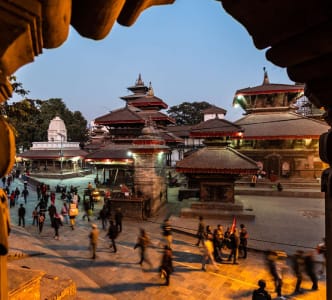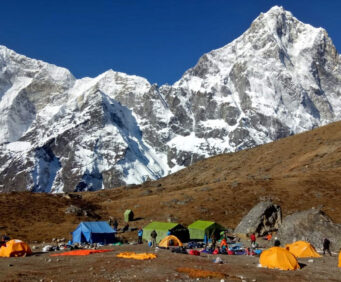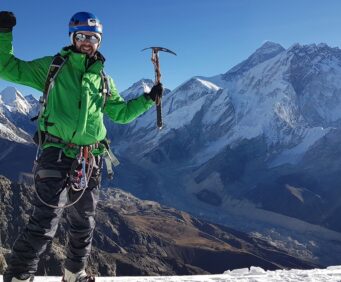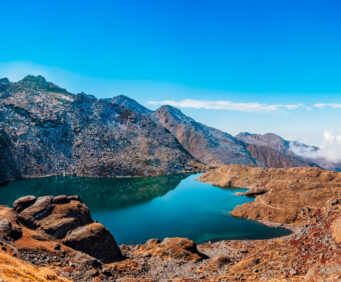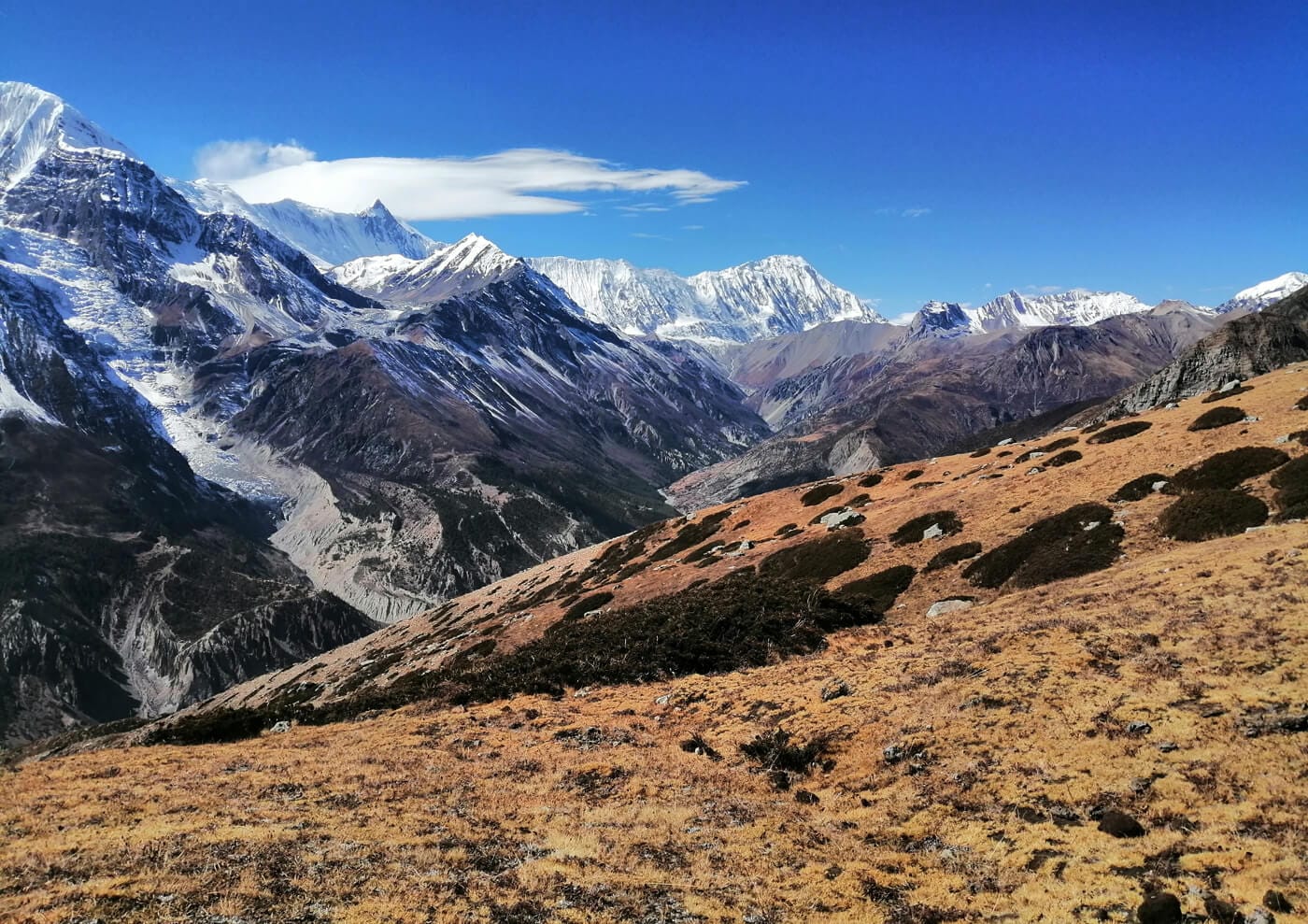
Annapurna Circuit Trek in 2025
24th August, 2025 - Posted By: Himalayan AbodeThe Annapurna Circuit trek is one of the most iconic and sought-after trekking routes in Nepal and the world. Offering a diverse range of landscapes—from subtropical forests to alpine meadows and snow-capped peaks—this trek is a dream for adventure seekers and nature lovers alike. Covering roughly 160 to 230 kilometers, depending on the route you take, the trek typically lasts about 12 to 21 days. This guide is crafted to equip you with everything you need—from beginner tips and route options to essential packing lists and permit information—to ensure your Annapurna Circuit trek in 2025 is safe, successful, and truly memorable.
The Annapurna Circuit trek takes you around the Annapurna massif, a spectacular range of peaks including Annapurna I, which towers at 8,091 meters. The route spans multiple climatic zones and communities, making it a culturally rich and visually stunning journey. Starting generally in Besishahar or Chamje and ending in Pokhara, the trek crosses the formidable Thorong La Pass at 5,416 meters—the highest point on the trek.
Why Choose the Annapurna Circuit Trek?
- Breathtaking views of the Annapurna and Dhaulagiri ranges.
- A diverse range of ecosystems and climates.
- Rich cultural experience with unique ethnic groups like Gurung, Thakali, and Manangi.
- Well-established teahouse infrastructure for accommodation.
- Flexibility in route options and durations for various fitness levels.
1. Annapurna Circuit Trek for Beginners: Essential Tips
While the Annapurna Circuit trek is suitable for beginners with reasonable fitness, preparation is key:
- Physical preparation: Build stamina with walking, hiking, and cardio exercises.
- Acclimatization: Ascend slowly and take rest days at key locations like Manang.
- Hydration and nutrition: Drink plenty of water and eat balanced meals to maintain energy levels.
- Gear: Invest in quality trekking boots and layered clothing for variable weather.
Beginners should also consider hiring local guides or joining trekking groups for better support.
2. Best Time for Annapurna Circuit Trek
The two best seasons for the Annapurna Circuit trek are:
- Spring (March to May): Moderate temperatures, blooming rhododendrons, and clear skies.
- Autumn (September to November): Stable weather and crystal-clear mountain views.
Avoid the monsoon (June-August) due to heavy rains and slippery trails, and be cautious in winter (December-February) with snow and extreme cold at higher altitudes.
3. Route Guide and Itinerary
A typical Annapurna Circuit trek itinerary lasts 12 to 14 days but can extend to 21 days based on pace and side trips.
Common Route Highlights:
- Starting point: Besishahar or Chamje
- Chame & Pisang: Scenic villages and lush landscapes
- Manang: Rest and acclimatization hub with optional side hikes like Tilicho Lake
- Thorong Phedi / High Camp: Base camps for crossing Thorong La Pass
- Thorong La Pass (5,416m): The trek’s highest and most challenging point
- Muktinath: An important pilgrimage site with temples and hot springs
- Jomsom and ending in Pokhara
Alternate Routes & Shortcuts:
- Some trekkers combine the circuit with the Annapurna Base Camp trek.
- Jeep or flight options from Jomsom to Pokhara shorten the trek’s end.
- Side trips to Lake Tilicho, Upper Mustang, or Gangapurna Glacier are popular.
4. Annapurna Circuit Trek Permits and Regulations
There are two main permits required:
- Annapurna Conservation Area Permit (ACAP): To enter the protected region.
- Trekkers’ Information Management System (TIMS) card: A mandatory trekking registry.
Permits can be obtained in Kathmandu or Manang, and fees vary depending on nationality. Ensure you carry them as authorities conduct regular checks.
5. Accommodation Guide
The Annapurna Circuit trek features teahouse accommodations—basic lodges offering meals, beds, and some hot water. Facilities range from rustic to more comfortable at popular stops:
- Teahouses at lower altitudes have better amenities.
- Above 3,000 meters, expect limited heating and fewer hot water options.
- Bring a warm sleeping bag for cold nights.
- Cash payments in Nepalese rupees are essential as cards and ATMs are rarely accepted.
Booking ahead during peak seasons is wise, especially at Thorong La Pass base camps.
6. What to Pack for the Annapurna Circuit Trek
Efficient packing makes all the difference on the Annapurna Circuit trek:
Clothing:
- Moisture-wicking base layers
- Insulating fleece or down jackets
- Waterproof and windproof outer shell
- Comfortable trekking pants and thermal leggings
- Gloves, warm hat, and sunglasses with UV protection
- Sturdy waterproof hiking boots and camp shoes
Gear:
- Trekking poles for stability
- Headlamp with extra batteries
- Sleeping bag rated for subzero temperatures
- Water purification tablets or filtration system
- Backpack rain cover
- Sunscreen and lip balm (SPF 50+)
- First-aid kit with altitude sickness medication
- Power bank for charging electronics
Miscellaneous:
- Passport, permits, and copies
- Cash in Nepalese rupees
- Snacks like energy bars and nuts
- Lightweight towel and toiletries
- Camera or smartphone for photos
7. Safety Tips
Safety is paramount:
- Monitor for altitude sickness symptoms and never ignore them.
- Keep to marked trails and avoid shortcuts.
- Stay updated on weather conditions.
- Carry travel insurance that covers high-altitude trekking.
- Use a GPS or map and inform someone of your itinerary.
- Drink only purified water.
- Trek with a guide if unfamiliar with the region or to enhance security.
8. Acclimatization
Rest days in Manang or Yak Kharka help the body adjust to higher altitude. Follow the rule of ascending slowly and descending if symptoms like headaches, nausea, or dizziness occur.
9. Combining Annapurna Base Camp and Circuit Trekking
Many trekkers opt to combine the Annapurna Circuit trek with the Annapurna Base Camp (ABC) for an extended experience. This adds spectacular close-up mountain views but requires additional days and fitness.
10. Physical and Mental Preparation
- Start your training months ahead with hiking and cardio workouts.
- Mentally prepare for challenging weather, long walking days, and remote conditions.
- Embrace flexibility in itineraries and plans.
- Take time to enjoy the natural beauty and local cultures on the trail.
Conclusion: Why the Annapurna Circuit Trek is a Must-Do in 2025
The Annapurna Circuit trek balances breathtaking landscapes, cultural richness, and physical challenge. With adequate preparation, smart packing, respecting local regulations, and listening to your body, trekkers of all levels can enjoy a safe, rewarding, and unforgettable journey through Nepal’s Himalayas.
Recent Posts
